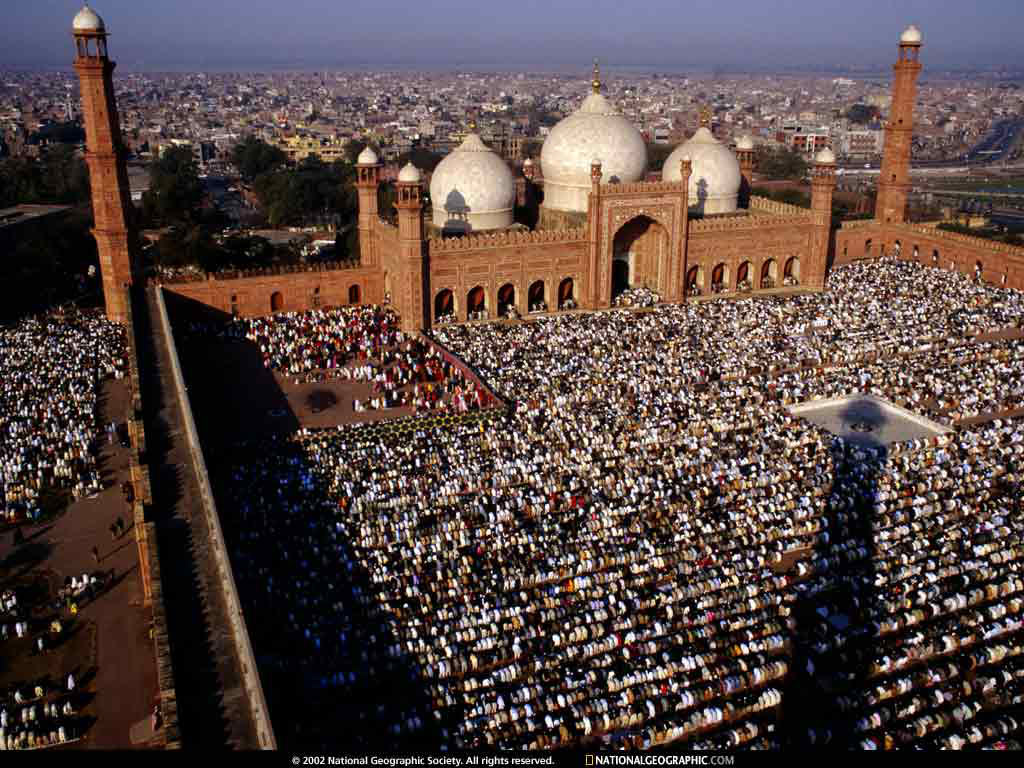faisal mosque islamabad
Completed in 1986, the Faisal Mosque (also known as Shah Faisal Masjid) is an exceptionally large and unique mosque in Islamabad. Designed by a Turkish architect who won an international competition for the honor, Faisal Mosque is shaped like a desert Bedouin's tent and functions as the national mosque of Pakistan.
History:
King Faisal bin Abdul Aziz of Saudi Arabia both suggested (in 1966) and largely funded the Faisal Mosque, which is named in his honor.
Ever since its conception, the mosque has been regarded as the national mosque of Pakistan, and as such it symbolizes the hopes and aspirations of the new nation.
The architect was Vedat Dalokay of Turkey, whose design was chosen in 1969 after an international competition. Constructed was completed in 1986.
What to See
The Faisal Mosque is located on an elevated area of land against a picturesque backdrop of the Margalla Hills. This enviable location represents the mosque's great importance and allows it to be seen from miles around day and night.
The mosque's architecture is strikingly modern and unique, lacking both the traditional domes and arches of most other mosques around the world.
The shape of the Faisal Mosque is an eight-sided concrete shell inspired by a desert Beduoin's tent and the cubic Ka'ba in Mecca, flanked by four unusual minarets inspired by Turkish architecture. The architect later explained his thinking to design school students:
I tried to capture the spirit, proportion and geometry of Kaaba in a purely abstract manner. Imagine the apex of each of the four minaret as a scaled explosion of four highest corners of Kaaba - thus an unseen Kaaba form is bounded by the minarets at the four corners in a proportion of height to baseShah Faisal Mosque akin to Kaaba.
Now, if you join the apex of each minaret to the base of the minaret diagonally opposite to it correspondingly, a four-sided pyramid shall be bound by these lines at the base side within that invisible cube. That lower level pyramid is treated as a solid body while four minarets with their apex complete the imaginary cube of Kaaba.
Entrance is from the east, where the prayer hall is fronted by a courtyard with porticoes. The International Islamic University was housed under the main courtyard, but recently relocated to a new campus. The mosque still houses a library, lecture hall, museum and cafe.
The interior of the main tent-shaped hall is covered in white marble and decorated with mosaics, calligraphy by the Pakistani artist Sadeqain, and a spectacular Turkish-style chandelier.
The prayer hall can accommodate 10,000 worshippers. (There is room for an additional 24,000 in the porticoes and 40,000 in the courtyard.)
The mausoleum of General Muhammad Zia-ul-Haq, whose 1988 funeral at the site was the largest in the history of Pakistan, is located adjacent to the mosque.













